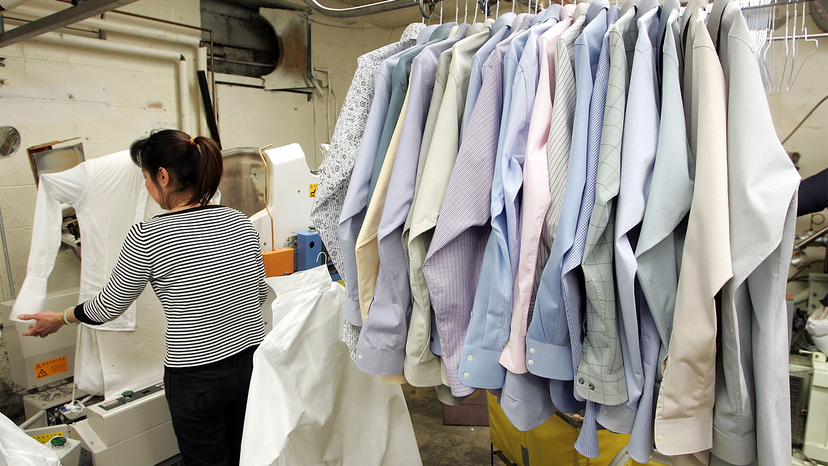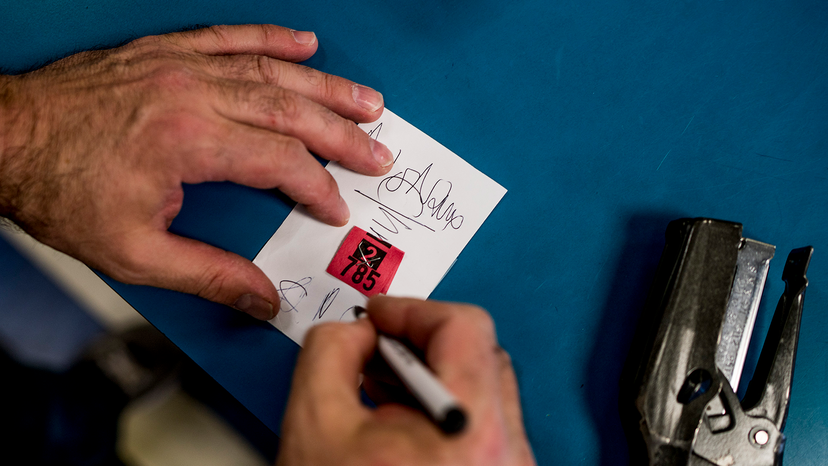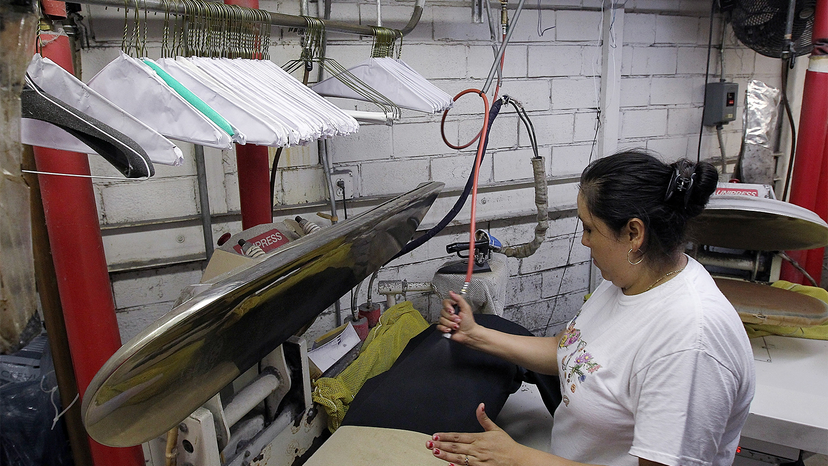Despite the name, the clothes don't stay dry during dry cleaning. They actually get wet! While there are many brands and makes of cleaning machines, they are all basically the same in principle and function. A cleaning machine is a motor-driven washer/extractor/dryer that holds from 20 to 100 pounds (9 to 45 kg) of clothes or fabrics in a rotating, perforated stainless-steel basket. The basket is mounted in a housing that includes motors, pumps, filters, still, recovery coils, storage tanks, fans and a control panel. In all modern equipment, the washer and the dryer are in the same machine. Doing this makes it possible to recover nearly all of the perc used during cleaning, which is better for the environment and saves the dry cleaner money.
As the clothes rotate in the perforated basket, there is a constant flow of clean solvent from the pump and filter system. The solvent sprays into the basket and chamber constantly — not only immersing the clothes, but gently dropping and pounding them against baffles in the cylinder as well. The dirty solvent is pumped continuously through the filter and re-circulated free and clear of dirt that gets trapped in the filter.
As an example, a typical machine might pump solvent through the clothes at a rate of perhaps 1,500 gallons (5,678 liters) per hour. The most commonly used solvent is perchloroethylene, known in the industry as "perc." Perc is about 69 percent heavier than water. If a cycle lasts for eight minutes, the clothes would be doused during mechanical action with 200 gallons (757 liters) of solvent. This is more than adequate to thoroughly clean the clothes.
The next cycle drains and rapidly spins the clothes to expel the solvent and then goes into a dry cycle by circulating warm air through the clothes. The remaining fumes and solvent are vaporized by warm air, condensed over cooling coils, and then passed through a secondary air control to get the solvent out
The distilled solvent is separated from any water (that may have remained in the clothes or system) and returned to the tank as distilled solvent. Since any moisture that may have condensed into water during the process floats on top of perc, it is relatively simple to separate it.
Regardless of which solvent the dry cleaner uses, the quality of cleaning, the degree of soil removal, the color brightness, the freshness, the odor and the softness all depend on the degree to which the cleaner controls his filter and solvent condition and moisture. Quality control can vary day to day unless the cleaner is constantly attentive to these factors.



